-
 Bitcoin
Bitcoin $117500
2.15% -
 Ethereum
Ethereum $3911
6.19% -
 XRP
XRP $3.316
10.79% -
 Tether USDt
Tether USDt $1.000
0.01% -
 BNB
BNB $787.2
2.24% -
 Solana
Solana $175.2
4.15% -
 USDC
USDC $0.9999
0.00% -
 Dogecoin
Dogecoin $0.2225
8.40% -
 TRON
TRON $0.3383
0.28% -
 Cardano
Cardano $0.7868
6.02% -
 Stellar
Stellar $0.4382
9.34% -
 Hyperliquid
Hyperliquid $40.92
7.56% -
 Sui
Sui $3.764
7.63% -
 Chainlink
Chainlink $18.48
10.66% -
 Bitcoin Cash
Bitcoin Cash $582.1
1.88% -
 Hedera
Hedera $0.2601
6.30% -
 Avalanche
Avalanche $23.33
4.94% -
 Ethena USDe
Ethena USDe $1.001
0.02% -
 Litecoin
Litecoin $122.3
2.04% -
 UNUS SED LEO
UNUS SED LEO $8.969
-0.27% -
 Toncoin
Toncoin $3.339
0.86% -
 Shiba Inu
Shiba Inu $0.00001287
4.30% -
 Uniswap
Uniswap $10.43
7.38% -
 Polkadot
Polkadot $3.861
5.08% -
 Dai
Dai $1.000
0.02% -
 Bitget Token
Bitget Token $4.513
3.41% -
 Monero
Monero $267.7
-6.18% -
 Cronos
Cronos $0.1499
4.14% -
 Pepe
Pepe $0.00001110
5.15% -
 Aave
Aave $284.9
8.28%
What is the destruction mechanism of BNB?
BNB's quarterly burn strategy, often accompanied by token repurchases, aims to enhance token value, foster user confidence, and drive demand for the cryptocurrency.
Feb 16, 2025 at 10:00 pm
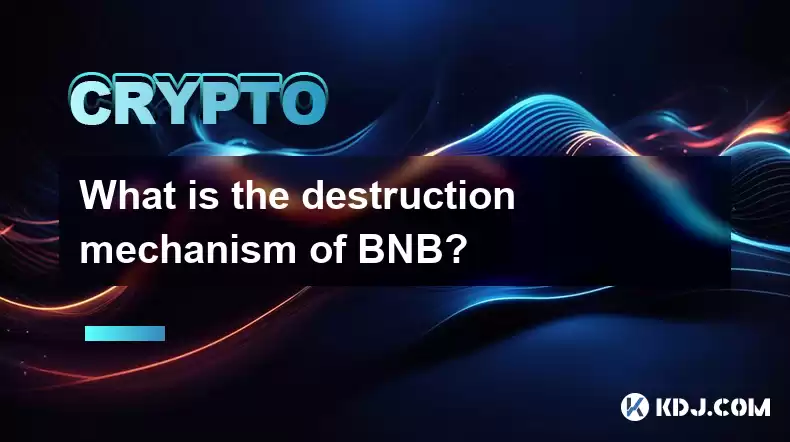
Key Points:
- Importance of burn mechanisms in the cryptocurrency ecosystem
- BNB's unique burn and repurchase strategy
- Calculation and timing of BNB burns
- Benefits and impact of BNB burns on token value and ecosystem
- Comparison of BNB's burn mechanism with other top cryptocurrencies
BNB's Destruction Mechanism
1. Introduction: The Cryptocurrency Ecosystem and Burn Mechanisms
In the cryptocurrency world, burn mechanisms play a crucial role in maintaining token scarcity and value stability. By periodically removing a portion of tokens from circulation, burn mechanisms reduce supply and increase demand, thus pushing up the price of the remaining tokens.
2. BNB's Burn and Repurchase Strategy
Binance Coin (BNB) employs a unique burn and repurchase strategy to sustain its token value. Binance, the parent company of BNB, allocates a portion of its profits for quarterly burns, which are often combined with token repurchases. This strategy aims to reduce BNB supply while simultaneously increasing its scarcity.
3. Calculation and Timing of BNB Burns
The amount of BNB burned is calculated based on Binance's quarterly profits and BNB's performance in the market. The burn and repurchase events are typically announced in advance and scheduled on a quarterly basis. The exact timing and amount of burns may vary depending on market conditions.
4. Benefits of BNB Burns
BNB burns offer several key benefits:
- Reduced Supply: By removing tokens from circulation, burns reduce BNB supply and increase its scarcity, which positively affects its price.
- Enhanced Token Value: As supply decreases, demand for BNB increases, resulting in an increase in its value over time.
- User Confidence: Regular burns demonstrate Binance's commitment to maintaining BNB's long-term value and reinforce user confidence in the token.
5. Impact of BNB Burns on the Ecosystem
BNB burns have a positive impact on the BNB ecosystem:
- Increased Liquidity: Reduced supply enhances BNB's liquidity, minimizing price volatility and facilitating seamless transactions.
- Expanded Use Cases: BNB's value increase expands its use cases as a medium of exchange, payment option, and store of value within the Binance ecosystem.
- Community Growth: Successful burns attract new users and investors, fostering community growth around BNB.
6. Comparison with Other Cryptocurrencies
Compared to other top cryptocurrencies with burn mechanisms, BNB stands out in terms of:
- Regularity: BNB burns occur on a quarterly basis, providing consistent support for its value.
- Transparency: Binance discloses detailed information about each burn event, ensuring transparency and accountability.
- Repurchases: The combination of burns and token repurchases further reinforces BNB's value proposition.
FAQs:
What is the rationale behind BNB burns?
BNB burns aim to reduce token supply, increase scarcity, enhance token value, instill user confidence, and foster community growth.
How does BNB's burning strategy differ from other cryptocurrencies?
BNB burns are conducted on a quarterly basis, are transparent, and are often combined with token repurchases. These features set BNB apart from other cryptocurrencies with token burn mechanisms.
What are the implications of BNB burns for token holders?
BNB burns can increase demand for BNB, leading to potential price appreciation and return on investment for token holders. However, it's important to note that market conditions and other factors can impact BNB's price.
Is there a specific threshold for BNB burns?
The amount of BNB burned each quarter varies based on Binance's profits and BNB's market performance. Binance does not have a predetermined threshold for burns.
Disclaimer:info@kdj.com
The information provided is not trading advice. kdj.com does not assume any responsibility for any investments made based on the information provided in this article. Cryptocurrencies are highly volatile and it is highly recommended that you invest with caution after thorough research!
If you believe that the content used on this website infringes your copyright, please contact us immediately (info@kdj.com) and we will delete it promptly.
- Tron's Sell-Off Spurs Altcoin Shift: What's Next for TRX?
- 2025-08-08 08:30:12
- RUVI Presale: Is the Growth Potential Real?
- 2025-08-08 09:10:12
- Sleep Token's US Takeover: Thornhill Rides the 'Even In Arcadia' Wave
- 2025-08-08 08:30:12
- FTT Token's Wild Ride: Creditor Repayments vs. Market Drop - A New Yorker's Take
- 2025-08-08 07:10:12
- Floki Crypto Price Prediction: Riding the Robinhood Rocket or Just a Meme?
- 2025-08-08 07:15:12
- EigenLayer, Restaking, and Ethereum: Navigating the Hype and the Hazards
- 2025-08-08 06:30:12
Related knowledge

Where can I buy UMA (UMA)?
Aug 07,2025 at 06:42pm
Understanding UMA and Its Role in Decentralized FinanceUMA (Universal Market Access) is an Ethereum-based decentralized finance (DeFi) protocol design...
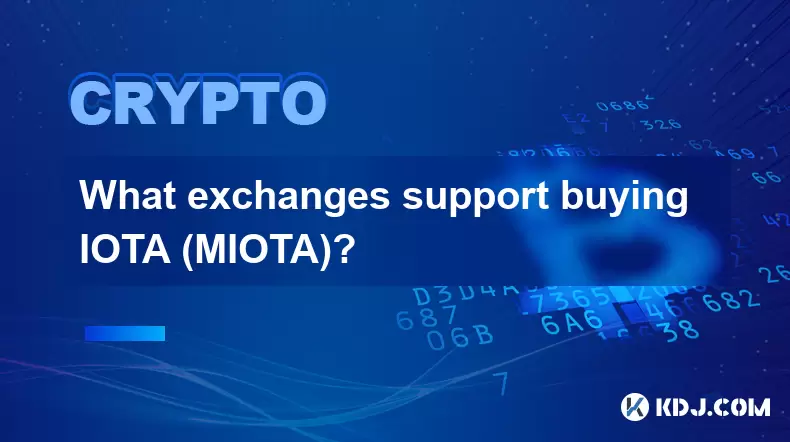
What exchanges support buying IOTA (MIOTA)?
Aug 07,2025 at 09:58pm
Understanding the Role of Private Keys in Cryptocurrency SecurityIn the world of cryptocurrency, private keys are the cornerstone of ownership and con...
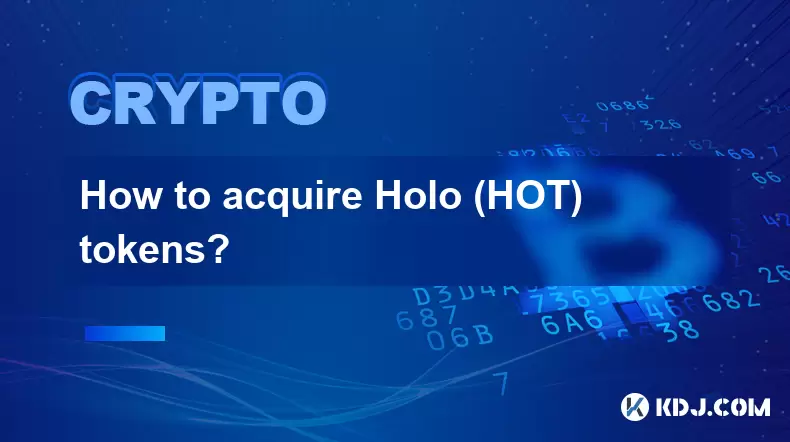
How to acquire Holo (HOT) tokens?
Aug 08,2025 at 05:56am
Understanding Holo (HOT) and Its EcosystemHolo (HOT) is a cryptocurrency token associated with the Holo ecosystem, which is built on the Holochain fra...
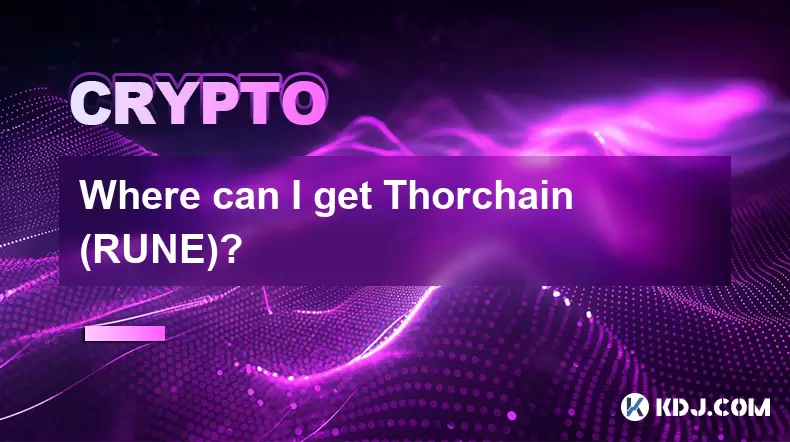
Where can I get Thorchain (RUNE)?
Aug 08,2025 at 08:07am
Understanding the Role of Seed Phrases in Cryptocurrency WalletsA seed phrase, also known as a recovery phrase or mnemonic phrase, is a critical compo...
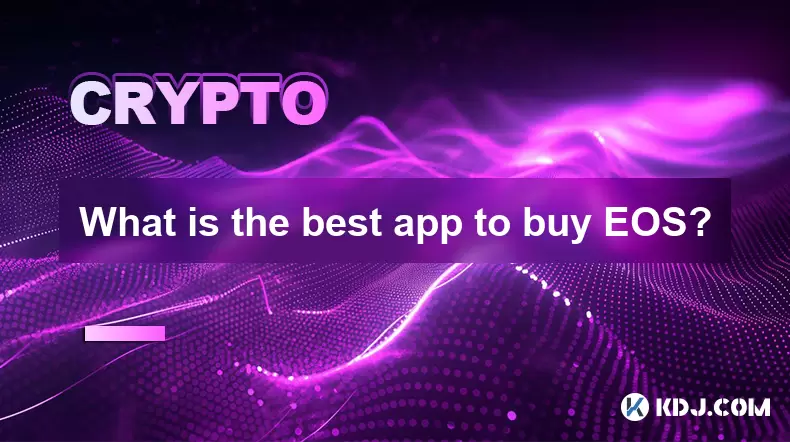
What is the best app to buy EOS?
Aug 07,2025 at 04:35pm
Understanding EOS and Its Role in the Cryptocurrency EcosystemEOS is a blockchain platform designed to support decentralized applications (dApps) with...
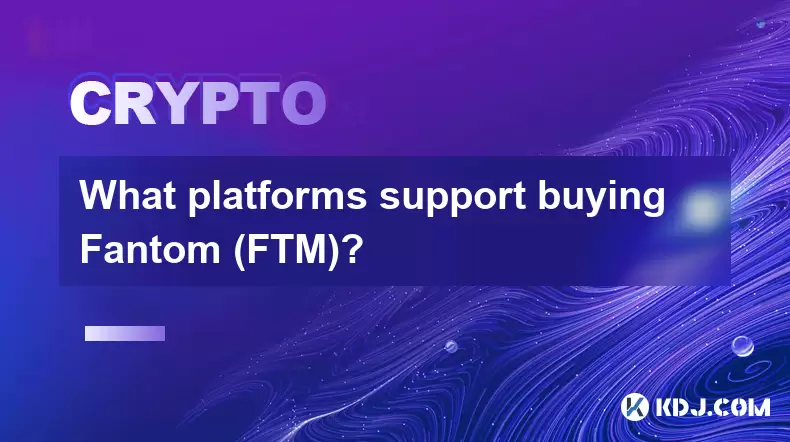
What platforms support buying Fantom (FTM)?
Aug 08,2025 at 01:56am
Overview of Fantom (FTM) and Its EcosystemFantom (FTM) is a high-performance, scalable, and secure layer-1 blockchain designed to overcome the limitat...

Where can I buy UMA (UMA)?
Aug 07,2025 at 06:42pm
Understanding UMA and Its Role in Decentralized FinanceUMA (Universal Market Access) is an Ethereum-based decentralized finance (DeFi) protocol design...

What exchanges support buying IOTA (MIOTA)?
Aug 07,2025 at 09:58pm
Understanding the Role of Private Keys in Cryptocurrency SecurityIn the world of cryptocurrency, private keys are the cornerstone of ownership and con...

How to acquire Holo (HOT) tokens?
Aug 08,2025 at 05:56am
Understanding Holo (HOT) and Its EcosystemHolo (HOT) is a cryptocurrency token associated with the Holo ecosystem, which is built on the Holochain fra...

Where can I get Thorchain (RUNE)?
Aug 08,2025 at 08:07am
Understanding the Role of Seed Phrases in Cryptocurrency WalletsA seed phrase, also known as a recovery phrase or mnemonic phrase, is a critical compo...

What is the best app to buy EOS?
Aug 07,2025 at 04:35pm
Understanding EOS and Its Role in the Cryptocurrency EcosystemEOS is a blockchain platform designed to support decentralized applications (dApps) with...

What platforms support buying Fantom (FTM)?
Aug 08,2025 at 01:56am
Overview of Fantom (FTM) and Its EcosystemFantom (FTM) is a high-performance, scalable, and secure layer-1 blockchain designed to overcome the limitat...
See all articles

























































































